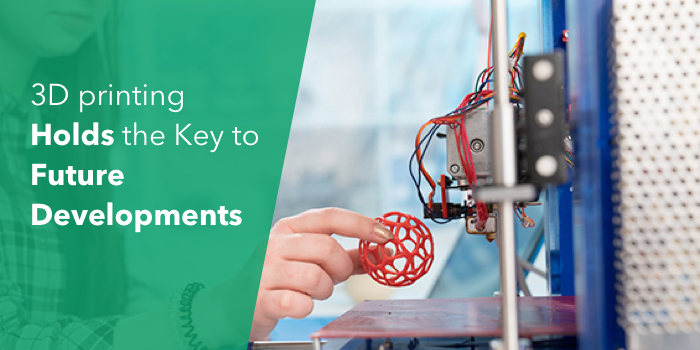3D printing Holds the Key to Future Developments

3D printing also popularly known as additive manufacturing has become so popular in recent times that it can now democratize production in various industries and applications. 3D printing machines are now making their way into businesses, homes, disaster sites, or even outer space. As this technology becomes more and more popular, it would help to connect the larger section of society with essential products. If its potential is summed up, this technology can actually revolutionize societies and at the same time change the development sector. Therefore, in order to tap its full potential, ensure that this technology gets to the notice of development practitioners around the globe.
Fighting hunger and homelessness with 3D technology
This technology is already being explored as one of the biggest solutions to the future levels of homelessness and hunger. For example, a contractor hopes that one day his 3D printer will be able to empower the population of the earth with nutritionally appropriate meals which are synthesized one layer at a time from basic materials like oils and powder which are available at any grocery store. These cartridges can be transported easily and have better longevity if they can be made of sustainable products such as insect protein. We are not far from that day when every household has a 3D printer and every person on earth can feed themselves nutritionally enhanced and customized meals. The powder used for the cartridges can have a shelf life of 30 years which in turn will put an end to food waste in the near future.
Revolutionizing building construction
3D printing can enable cheaper and more precise construction of homes and buildings in general. Leveraging the use of industrial waste to build homes is the future of the construction industry. The cartridge used for printing is made of recycled materials thereby saving the use of the huge amount of cement and other products in building construction. These 3D printed structures are extremely energy efficient and are quite strong to the core as they can withstand earthquakes up to magnitude 9. The entire construction process also saves a significant amount of time by employing a huge number of workers thereby reducing the overall cost of construction. It is needless to say that the overall process reduces a considerable amount of waste and pollution compared to conventional methods of construction.
Enabling essential workers to act with shorter response time
3D printing can also come in handy for usage in the acquisition of essential services and goods to refugee camps and various other disaster-stricken areas thereby enabling essential service workers to have access to required customized tools in a very short span of time. During the earthquake in Nepal, United Nations implemented 3D printing to build customized parts as required for effective sanitation infrastructure.
Protecting the planet
3D printing enables to reuse of old materials in new methods that can become sustainable. The utilization of unused products like any kind of waste to create new products creates a waste-free energy-efficient planet. Various innovators across the globe have been exploring possibilities of using algae filaments for the reduction of energy used up during the printing process.
Transforming Medical Science
3D printing enables the creation of medical tools and products to practitioners at low cost and with utmost precision. Be it orthodontic products like dental implants or dentures or critical replacement organs like 3D printed hearts or medical tools like umbilical clips, 3D printing is the one-stop solution that can benefit patients and medical practitioners in the long run.
Availability of access
In collaboration with various programmatic implementers and innovators around the world, United Nations are working towards making this path-breaking technology available to people around the globe. In the current scenario, 3D printers and the overall process technology is confined to only a few specialized labs and technical universities in developing countries. In order to test the true potential of 3D printing, the equipment and technologies involved need to be more accessible to innovators worldwide.
When it comes to setting sustainable development goals, it is imperative to understand that these hold a big promise for our people and planet. Big goals require big changes in order to be implemented. 3D printing is today being used to help reach a large number of global goals and it already has created an impact on a global scale in order to make a bigger impact.


